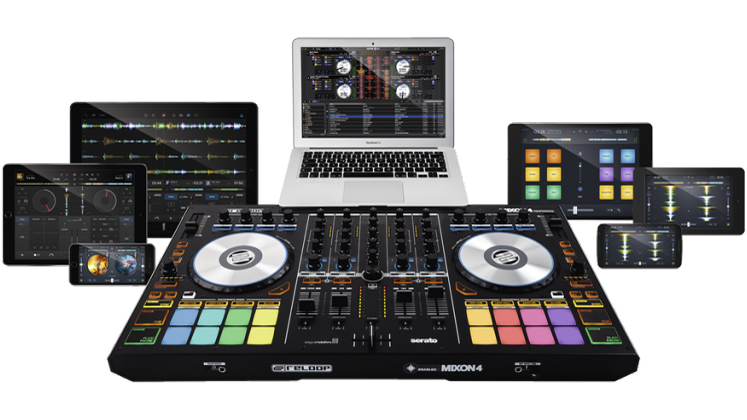Do I need any extra hardware?
Technically, you don’t need anything other than your laptop to get going with any of the above applications - and this might be the best way to start. Using your mouse and keyboard allows you to get to know the software and work out how you want to use it before you spend any money on extra gear.
However, if you want to go beyond messing about at home, you’re going to need to invest in some extras. At the very least, you’ll need an audio interface. Any club or house party-friendly sound system is going to require a decent quality output with plenty of power, and your computer’s built in output will not be up to the job. Also, if you want to use your software’s ‘cue’ functionality – allowing you to monitor a track via headphones without it playing over the speakers – you’ll need an interface with a separate headphone output.

There’s a good chance you’ll want to get your hands on a controller too. While most software can be controlled with a mouse and keyboard, doing so feels more like working in an office than rocking a dancefloor, and you’ll likely find it too fiddly for smooth mixes or well-timed effects. DJ controllers come in all shapes and sizes, ranging from the cheap and portable to things like Pioneer’s flagship RZ line, which are effectively a full pro-level DJ booth packed into a single piece of hardware.
The good news is that many controllers include audio interfaces, meaning there’s no need to pick one up separately. Broadly speaking, controllers also all offer some assortment of mixer controls, jog wheels – for traditional ‘hands-on’ control of a track’s position and speed – and performance pads, which are generally used for looping, beat slicings, sampling and jumping to a track’s ‘cue points’. Not every DJ is going to need all of these though.

Check out the best DJ controllers in the world today for more.
It’s also worth considering what software a controller works with. There are lots of controllers designed to work primarily with Traktor, Serato, rekordbox or another application specifically. These will offer tight plug-and-play control and likely need little effort to set up. There are also more general MIDI controllers which can be set-up to control a host of different applications. These can be more flexible overall, but will likely take more effort to get ‘mapped’ to your chosen software.
The best way to approach things is to experiment with different software apps until you’ve settled on a favourite, then decide how you want to use this and what you need from a controller.
Want all the hottest music and gear news, reviews, deals, features and more, direct to your inbox? Sign up here.
Current page: Do I need any extra hardware?
Prev Page What software do I need? Next Page What is a ‘digital vinyl system’?I'm the Managing Editor of Music Technology at MusicRadar and former Editor-in-Chief of Future Music, Computer Music and Electronic Musician. I've been messing around with music tech in various forms for over two decades. I've also spent the last 10 years forgetting how to play guitar. Find me in the chillout room at raves complaining that it's past my bedtime.